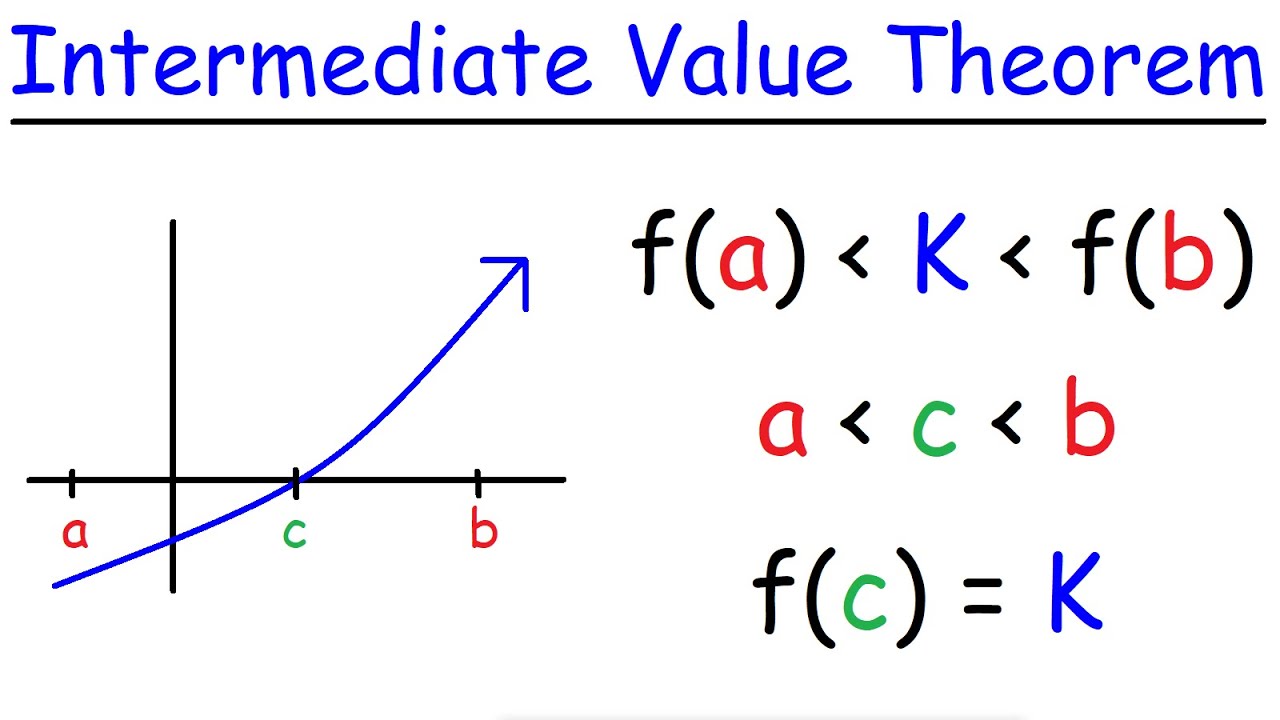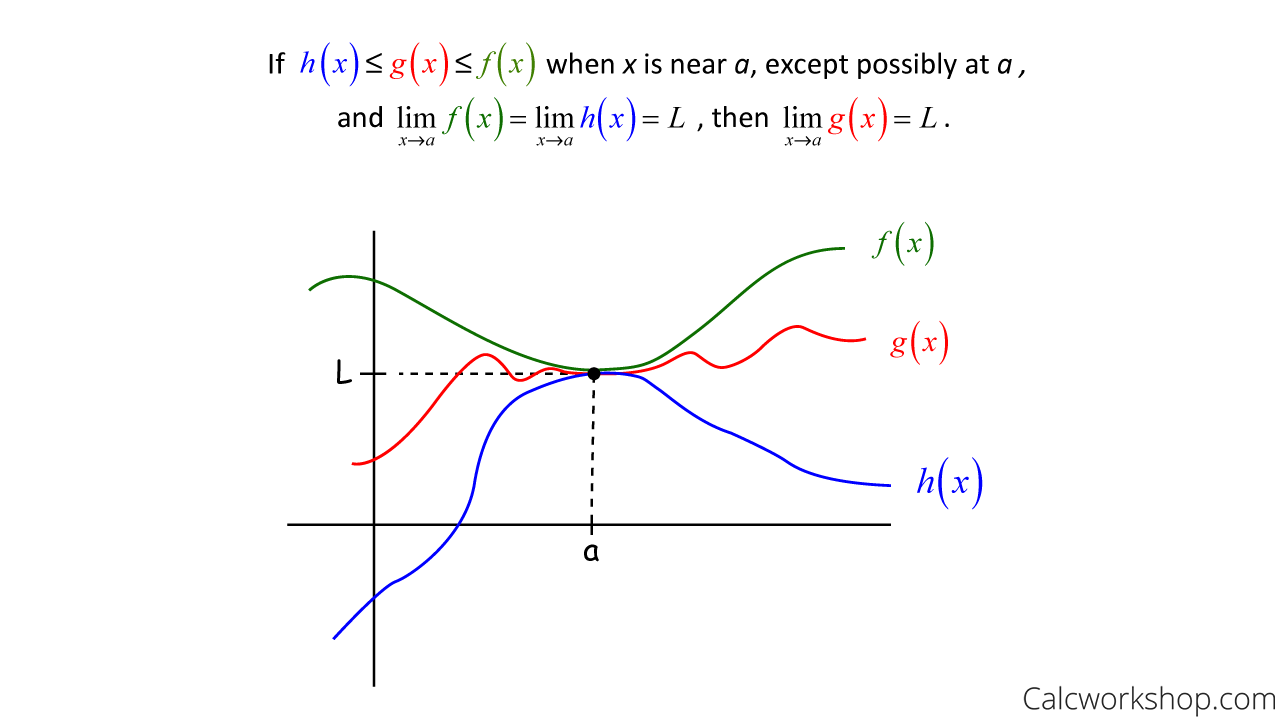Unit 1: Limits and Continuity
1/11
Earn XP
Description and Tags
Name | Mastery | Learn | Test | Matching | Spaced |
|---|
No study sessions yet.
12 Terms

IVT Theorem
If f is a continuous function whose domain contains the interval [a, b], then it takes on any given value between f(a) and f(b) at some point within the interval.

Squeeze Theorem
If f(x) ≤ g(x) ≤ h(x) for all x in an interval, and lim(x→c) f(x) = lim(x→c) h(x) = L, then lim(x→c) g(x) = L.
Continuity
f(c) exists
lim(x→c) f(x) exists
lim(x→c) f(x)=f(c)
Types of Continuities
Point Discontinuity is also called a Removable Discontinuity
Jump, Infinite, and Oscillating Discontinuities are a Non-Removeable Discontinuity

lim(x→∞) m>n
lim=DNE, will be either +∞ or -∞
no H.A,
lim(x→∞) m=n
Limit and H.A. is the ratio of the leading co-effecients
y=a/b
lim(x→∞) m<n
Limit and H.A. are equal to 0
y=0
#/∞= ?
#/∞=0
∞/#= ?
∞/#= ∞
∞*∞= ?
∞*∞= ∞
Rate of Change
constant < lnx < x^n < e^x < x^x
Is a polynomial always continuous?
Yes